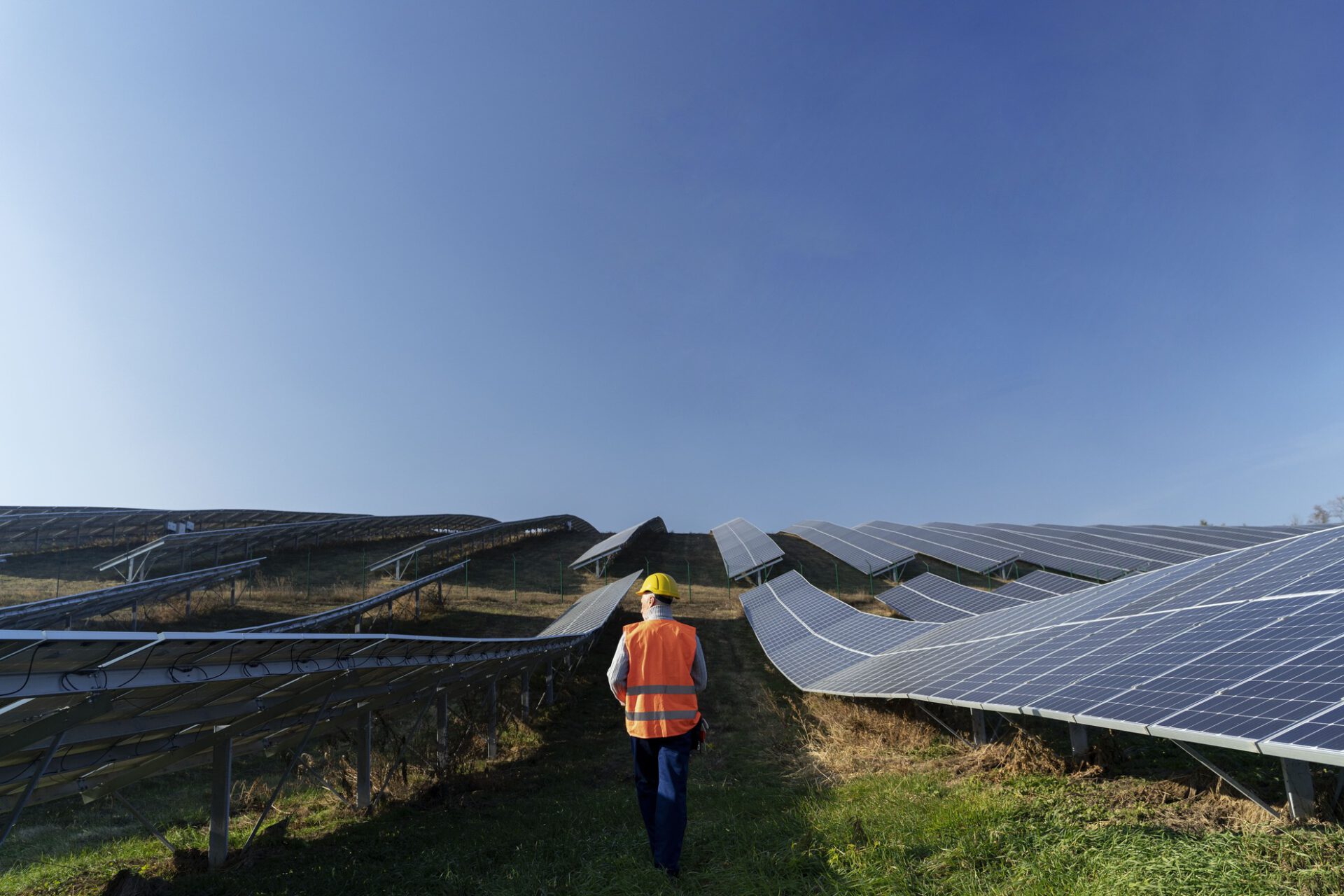Solar Energy Adoption: Building the Future
Addressing Solar's Limitations

Solar energy is already a big industry, with about $141 billion invested globally in 2019 and currently providing about 3% of the Earth’s electricity. In Germany, that figure is up around 10%. But according to the International Renewable Energy Agency, solar technology still needs to get a lot better if we are going to meet 2050 climate neutrality goals.
One way to increase global solar energy supply is to find improved materials for the panels. That’s because at the moment, photovoltaic systems are primarily prepared with crystalline wafers made of silicon. This is a material that doesn’t lend itself to efficiently converting sunlight to energy.
In fact, most modern PV panels convert less than 20% of the sun’s rays into power. A better way might be to construct them using perovskite. This is a semitransparent mineral composed of calcium, titanium, and oxygen. It allows for the production of panels with very thin layers that require less material.
The problem with perovskite panels, however, is their short lifespan compared with silicon-based equivalents. One workaround is to place the two materials on top of each other, like in the way tandem cells are made. These layered cells are optimised for each section of the light spectrum.
The top, semi-transparent layer absorbs high energy photons while the lower layer absorbs the low energy photons. This creates a more efficient solar panel overall, since each section of the lightbeam is targeted and harnessed for its energy individually.
And although there are many different kinds of tandem cells, they generally function on this guiding principle that two layers are better than one, which is why they are being actively researched as a potential future for the photovoltaic industry.
Making photovoltaics more efficient is only one way solar technology is going to become the earth’s fastest-growing power source, as some future projections suggest. Transporting and storing the energy harnessed from the sun is going to require innovations, particularly in the way this process is then linked to electrical grids around the world.
Using lithium-ion batteries is one rechargeable option here. These have higher costs compared to classic lead-acid batteries, however, and both battery forms rely on the mining of hazardous chemicals. This in turn raises the question: What is the most efficient and ecologically friendly way to create panels in the first place?
Determining the answer relies on identifying new materials, building prototypes and identifying potential improvements. These are all gradual processes. The issue of land usage is also of concern, particularly in Europe, since it does not have the great expanses of desert that can be employed for harvesting sunlight.
In Germany, tracts of land earmarked for solar parks are left undeveloped due to local resistance. France is in a similar position where building permits, environmental impact assessments and public surveys impede the swift uptake of solar, particularly in regions where urban growth and agricultural requirements compete for land.
In Spain, regional officials are trying to slow the spread of solar farms for fear of disturbing the countryside after pushback from local communities. Some of the complaints stem from the visual depreciation of the land that cannot be returned to the original use due to the soil degradation associated with the mining, hosting and ultimately disposing of the panels.
So what can be done? Three possible solutions for the land-usage problem are rooftop panels, agrovoltaic farming and floating solar parks. The European Solar Rooftops Initiative is designed to encourage the first approach, since it will see the EU implementing a large-scale rollout of solar energy as part of its plans to rebuild the Union’s solar manufacturing industry.
Agrovoltaic farming, on the other hand, is the practice of growing crops underneath solar panels. This technology has seen some momentum in France, where farmers in the Haute-Saône region, in the northeastern part of the country, are trying to see whether solar energy can be generated without hindering large-scale cereal crops. The perceived advantage here is that the panels, which can turn with the sun and rain, will allow farmers to keep producing food while providing shade to protect crops from climate change.
Finally there are floating solar parks, or ‘floatovoltaics’ as they are sometimes dubbed. This is an approach that essentially replaces land with water. Having the panels float helps to boost their efficiency by naturally cooling them, since, as a general rule, the hotter a panel is, the less efficient it becomes.
Further benefits ultimately depend on the project design and environmental factors such as water depth, shore distance and hydro-geographical conditions. Another consideration is that while such panels might act as artificial reefs for small organisms, they may also promote the spread of invasive species.
Here we’ve only cover three potential solutions. Are you working on another one that we could include? Mention it in the comments or get in touch for a potential interview.
